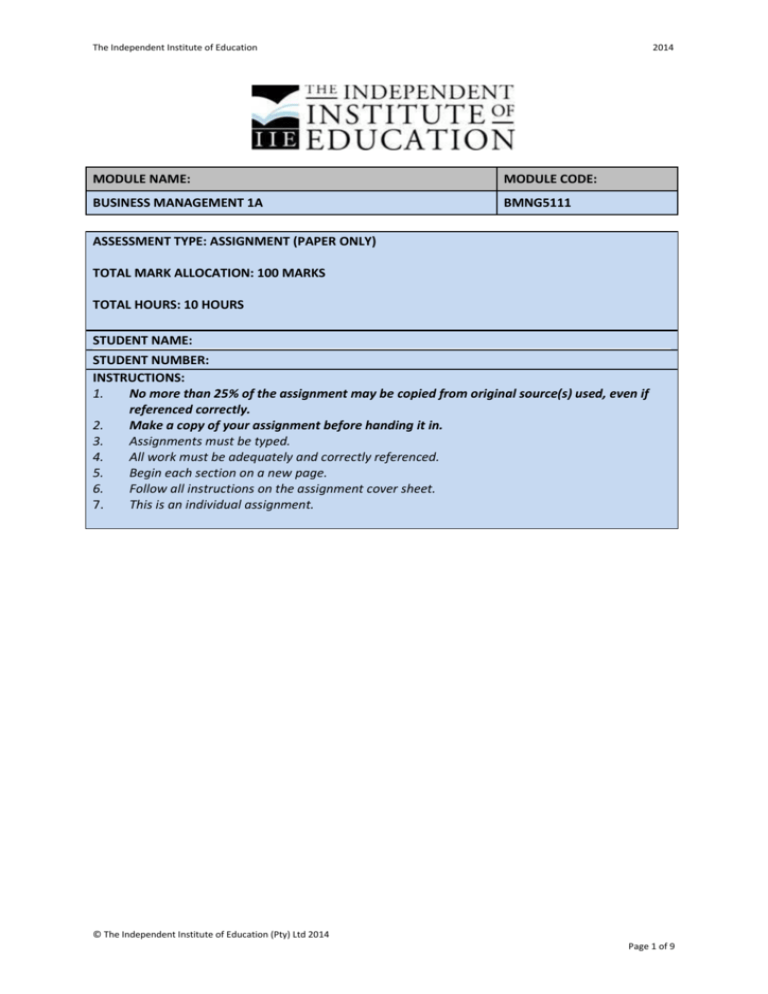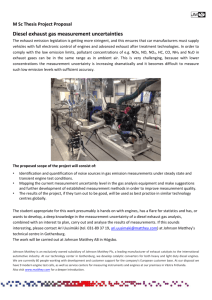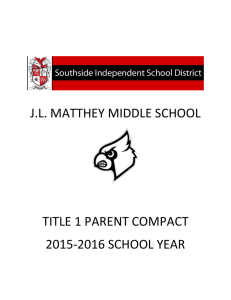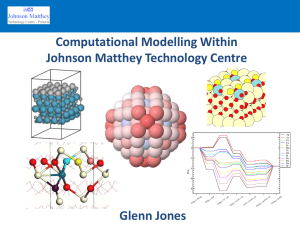MODULE NAME: MODULE CODE: BUSINESS MANAGEMENT 1A
advertisement

The Independent Institute of Education 2014 MODULE NAME: MODULE CODE: BUSINESS MANAGEMENT 1A BMNG5111 ASSESSMENT TYPE: ASSIGNMENT (PAPER ONLY) TOTAL MARK ALLOCATION: 100 MARKS TOTAL HOURS: 10 HOURS STUDENT NAME: STUDENT NUMBER: INSTRUCTIONS: 1. No more than 25% of the assignment may be copied from original source(s) used, even if referenced correctly. 2. Make a copy of your assignment before handing it in. 3. Assignments must be typed. 4. All work must be adequately and correctly referenced. 5. Begin each section on a new page. 6. Follow all instructions on the assignment cover sheet. 7. This is an individual assignment. © The Independent Institute of Education (Pty) Ltd 2014 Page 1 of 9 The Independent Institute of Education 2014 Referencing Rubric Providing evidence based on valid and referenced academic sources is a fundamental educational principle and the cornerstone of high quality academic work. Hence, The IIE considers it essential to develop the referencing skills of our students in our commitment to achieve high academic standards. Poor referencing will result in a penalty of a maximum of 5 marks against the percentage mark awarded to a student according to the following guidelines. Please note that this will not hold for assignments in which referencing is not required. Required Subtract 1 Subtract 2 Subtract 3 Subtract 4 Consistent, intext referencing style Quotation marks, page numbers, years, etc. applied correctly Only one or two minor mistakes made All sources academically sound and included in reference list Accurate recording of references. Consistent in-text referencing style Quotation marks, page numbers, years, etc. applied correctly Fewer than five minor mistakes made More than 90% of the sources are academically sound and included in reference list Mostly accurate recording of references. Consistent intext referencing style Quotation marks, page numbers, years, etc. not always applied correctly Not all paraphrased content referenced At least 80% of the sources are academically sound and included in reference list Generally accurate recording of references. Consistent intext referencing style Quotation marks used for direct quotes but page numbers missing Fewer than 50% of the sources are academically valid Reference list incomplete Inaccurate recording of references. Referencing style inconsistent Paraphrased material not referenced in text Quotation marks and/ or page numbers for direct quotes missing Fewer than 25% of the sources are academically valid Reference list incomplete. Subtract 5 Exceptionally poor and inconsistent referencing None of the sources academically valid. © The Independent Institute of Education (Pty) Ltd 2014 Page 2 of 9 The Independent Institute of Education 2014 Section A (Marks: 50) Read the case study below and answer the questions that follow. Johnson Matthey Johnson Matthey is a leading global speciality chemicals company. Science and technology are embedded in everything that it does. It has operations in over 30 countries and employs around 11,000 people. It was founded in 1817 to refine and develop products using precious metals – something it still does today. As well as creating precious metal containing products, it also recycles precious metals and manufactures many other high technology products and chemicals. So, how does Johnson Matthey affect you? If you have ever travelled in a car it is likely to have been fitted with a catalytic converter to reduce vehicle emissions. Johnson Matthey produces catalytic converters for around a third of all cars manufactured in the world. This product has huge environmental and health benefits for everyone through reducing pollution. Its products aim to have a positive impact on society and the environment, values which are at the heart of Johnson Matthey’s operations. It creates catalysts which help to control pollution in oil refining processes. These catalysts speed up refining processes and help reduce the sulphur content of petrol, as sulphur is a major pollutant. Johnson Matthey operates in an industry driven by advancements in technology. To remain competitive the company needs a highly skilled workforce to establish new and more efficient ways of meeting the challenges faced by the industry. To be at the forefront of technological innovations the company requires people with skills in STEM subjects (Science, Technology, Engineering and Maths) as well as skills in other areas. Johnson Matthey offers many highly rewarding career opportunities for people that share the company’s commitment to sustainability and the creation of a positive impact on society through its products. It offers first rate training and development opportunities enabling employees to grow their careers with the company. Since the 1970s more and more countries have passed laws to control air pollution. Poor air quality affects peoples’ health, is bad for the environment and has other knock-on effects. For instance, poor health costs the economy money directly through increased healthcare costs and indirectly in days missed from work. The amount of potentially harmful emissions rises as the number of vehicles on the roads increases. Governments set limits to reduce emissions from vehicles and to control what pollutants are legal, putting pressure on car manufacturers. This means new technology is required to improve the efficiency of catalytic converters. Johnson Matthey’s highly skilled research and development (R&D) teams develop this technology. Its © The Independent Institute of Education (Pty) Ltd 2014 Page 3 of 9 The Independent Institute of Education 2014 converters use chemistry to convert harmful pollutants in exhaust fumes into less harmful gases. Countries often seek new investment to help their economies grow. As a result of the greater demand for catalytic converters, Johnson Matthey needed to expand production in Europe. Its options were to expand existing sites or build a new plant. After considering all the key factors, Macedonia was chosen for the new site. One way to attract investment into a country’s economy is through the level of tax that it requires companies to pay. Governments can set tax to encourage certain businesses or types of business to operate in their country. In the UK the government encourages innovation in technology-focused businesses. Tax credits are given to businesses that invest in R&D to create new products and techniques, many of which can be exported around the world. The 2008 banking crisis, when many major banks failed, caused a fall in growth around the world because companies could no longer obtain the loans they needed for investment. This recession meant a fall in demand for many organisations’ products, including Johnson Matthey. Like many companies, Johnson Matthey looked for ways to reduce costs. One solution was to increase efficiency. The company set targets to reduce the use of natural resources and decrease waste through lean production techniques. Achieving these targets meant Johnson Matthey reduced costs and became more sustainable. The benefits of this were two-fold – saving the company money whilst at the same time conserving the planet’s valuable natural resources. As the world tries to emerge from recession, Johnson Matthey’s focus on being more sustainable and manufacturing more efficiently has improved its position beyond where it stood in 2008. Johnson Matthey is keen to benefit from the high levels of economic growth in China. This growth has led to a higher demand for cars in the country and a subsequent increased demand for catalytic converters. The economic growth has also created a building boom, meaning greater demand for the plastics that the company’s products help to produce. Rather than transport goods to China, Johnson Matthey has established manufacturing plants in the country. Its presence in China provides a platform for further growth. One part of Johnson Matthey’s business is linked to refining and recycling precious metals. 4% of its global sales are in this market. It mainly extracts metals such as gold and platinum from redundant products and unwanted jewellery and recycles them. The inputs in this model are the products that have reached the end of their useful life, the outputs are the precious metals obtained. The amount of inputs available, and the value of the outputs, changes as the price for these metals change. High prices mean more inputs, as customers are keen to increase their returns. If prices fall, the amount of inputs will also fall. The financial performance of Johnson © The Independent Institute of Education (Pty) Ltd 2014 Page 4 of 9 The Independent Institute of Education 2014 Matthey’s refining business is therefore dependent, in part, on the prices of precious metals. As sustainability and protecting the environment are high on the public agenda, the need for products that do the most good whilst taking as little as possible from the natural world increases. Johnson Matthey specialises in products that benefit society and the environment. Johnson Matthey employs a high proportion of staff in highly technical areas such as science and engineering. Its people are its greatest asset. However, it can be difficult to recruit people with the skills and knowledge that the company requires. To address this issue Johnson Matthey is trying to raise the awareness of young people to the excellent career prospects available to students who study STEM subjects at school or college. Technological change could cause problems for Johnson Matthey. If, for example, a new technology replaced the internal combustion engine, catalytic converters may no longer be needed. Johnson Matthey is therefore looking at alternative technology, for instance, using catalysts in fuel cells. This is a low carbon way to produce electricity and could be an important source of power in the future. Johnson Matthey has made sure it is at the forefront of such change by working with car manufacturers on fuel cell vehicles. It is also working on better, more efficient batteries which could be used to power our cars, based on R&D advances. Johnson Matthey actively uses new technology to reach its various stakeholders. These range from investors and customers to potential new recruits. It tailors its message to each audience using digital media. Its website is constantly being improved with the latest technology, including a mobile friendly version. For investors, there is a tablet based app. It also uses key social media routes such as Twitter, Facebook and YouTube. Johnson Matthey’s values centre on health and safety and developing sustainable, environmentally sound products and processes. Johnson Matthey is focused on ‘doing the right thing’ with its products that aim to have a positive impact on society and the environment. Cleaner air means fewer problems with pollution and health issues such as asthma. Greater efficiency in fuel use and in chemical processes means fewer natural resources are used. Its involvement in all aspects of the production process, from acquiring materials, manufacturing, refining and developing technologies means that it positively improves the environment in all aspects of its operations. (Adapted from The Times 100 Business Case Studies: A Johnson Matthey Case Study.) © The Independent Institute of Education (Pty) Ltd 2014 Page 5 of 9 The Independent Institute of Education 2014 Question 1 (Marks: 50) Base your answers to the following questions on the above case study and the theory in your course material. Q.1.1 There are three (3) distinct business environments namely the micro, market and macro (20) environment. Name the six (6) components or variables of the macro environment. With the use of relevant examples from the case study provided, under each component, discuss the factors in the macro environment that may affect Johnson Matthey. Note that in this case study some components impact more than others. Q.1.2 Considering the business environment that Johnson Matthey operates in, discuss the reasons (6) why they should conduct environmental scanning? Q.1.3 Study how Corporate Social Responsibility (CSR) is explained as an umbrella term with three (9) (3) components in your textbook. Evaluate whether Johnson Matthey is practicing Corporate Social Responsibility. Q.1.4 Discuss five (5) key factors that should be considered when locating a new plant for Johnson (10) Matthey. Q.1.5 Johnson Matthey is a public company. Discuss five (5) advantages of a public company. (5) Section B (Marks: 50) Question 1 (Marks: 20) Although economic systems do not occur in a pure form, there are three main economic systems namely the market economy, socialism and the command economy. Using the information in Chapter 1 of your textbook answer the following questions. Q.1.1 Discuss the three (3) main economic systems mentioned above. (15) Q.1.2 Indicate which system you believe South Africa is following. Motivate your answer. (5) © The Independent Institute of Education (Pty) Ltd 2014 Page 6 of 9 The Independent Institute of Education 2014 Question 2 (Marks: 30) The state of entrepreneurship in South Africa is regarded as being below what is necessary to support a consistently high level of economic growth. Write a short essay of 750-1000 words on the following topic: “Discuss the challenges which entrepreneurs face in South Africa” In your essay you should briefly comment on the state of entrepreneurship in South Africa and the importance of entrepreneurship. Sources of information In order for you to answer this question you should read the relevant section in your textbook and consult the article ‘Tracking SMME Development in South Africa: Issues of Finance, Training and the Regulatory Environment’ by Professor Christian Rogerson published in ‘Urban Forum’ in 2008. Additional reading will be beneficial and you are encouraged to consult additional academic and reputable publications in order to enhance your answer. You should avoid general websites such as Wikipedia as these are not necessarily reputable sources. Sources such as newspapers and magazines can be used but as their content is not always accurate and reliable, they should support arguments based on academic references. You can access Professor Rogerson’s article and other reputable sources via Ebscohost. Recommended Readings: Ashton, M. 2010. SA entrepreneurs need a Pikitup. Finweek, 22 July 2010 pp.16–19. (Available from Ebscohost) Rogerson, C. 2008. Tracking SMME Development in South Africa: Issues of Finance, Training and the Regulatory Environment, Urban Forum, 19(1), March 2008. pp.61–81. The entrepreneurial dialogues: State of entrepreneurship in South Africa, published by FNB in association with the Gordon Institute of Business Science. (Available under supplementary module material on the student portal) Neiman, G and Nieuwenhuizen, C. 2009. Entrepreneurship: A South African perspective. Pretoria: Van Schaik, 2nd edition, Chapters 1 and 2. © The Independent Institute of Education (Pty) Ltd 2014 Page 7 of 9 The Independent Institute of Education 2014 Assessment You will be assessed according to the categories below. Be sure to stay within the word limit as you will penalised for exceeding it. Criteria Points for consideration All main themes covered; Substantiation of arguments; Critical thinking and analytical skills. Structure of answer Focused introduction and conclusion; and Clarity of writing Logical and coherent flow through paragraphs; Clear meaning of sentences; Spelling, grammar and punctuation. Content of answer Marks (25) (5) Total (30) Writing Style You should be aware that your essay should be written in an academic tone. The introduction should introduce and set out the main issue or problems to be debated, it thus sets the scene. The body should be a sequence of logical paragraphs outlining your argument. Headings can be used in the body but are not required. Finally, your conclusion should summarise and draw conclusions from what you have discussed. No new information should be presented in your conclusion. You should examine and seek to emulate (follow) the writing style in academic papers that you encounter as you perform your research. In general, avoid long winded sentences, rather use short and focussed sentences to make your points. Avoid using words that you do not fully understand. Clear and simple writing is preferred to using complicated expressions. Finally, ensure your in-text referencing and bibliography is correct by checking the referencing guidelines. © The Independent Institute of Education (Pty) Ltd 2014 Page 8 of 9 The Independent Institute of Education Criteria Content of answer Structure of answer and Clarity of writing Question 2: Marking Rubric Very weak Poor Acceptable Not all the main Not all the main themes All main themes covered themes covered. covered. Answer tends to albeit some superficially. Answer onefocus on one or two Answer tends to focus on dimensional focussed sections only. Answer one section at the on only one area. Very lacks depth, analysis and expense of others superficial. No analysis does not consider although all are or attempt to consider alternative viewpoints. mentioned. Limited alternative viewpoints. Arguments are not well analysis and synthesis No substantiation of substantiated. present. Arguments are arguments. sometimes well substantiated. 1 – 5 marks 6 – 10 marks 11 –15 marks Both Introduction and Introduction and Introduction and conclusion not clearly conclusion present but conclusion present. present. Ideas mixed not effective. Ideas mixed Logical flow of paragraphs between paragraphs between paragraphs with although some jumping with little logical flow. poor logical flow. between ideas. Meaning Sentences confused Meaning of each sentence of each sentence is with several spelling, can be ascertained. generally clear. Sentences grammar and Sentences often are coherent with few punctuation errors. repetitive with several spelling, grammar and spelling, grammar and punctuation errors. punctuation errors. 1Mark 2 Marks 3 Marks 2014 Accomplished All main themes covered. May be a slight over focus on a single area or side of the debate. Analytical skills evident but alternative perspectives may not be fully synthesized. General substantiation of arguments good. Excellent All main themes presented and well understood. Answer well balanced and demonstrates analysis and synthesis. Arguments logical and are well substantiated. 16 – 20 marks Clear Introduction and conclusion present. Logical flow of paragraphs. Meaning of each sentence is clear. Sentences are coherent with good spelling, grammar and punctuation. 21 – 25 marks Focussed introduction and conclusion. Logical flow of paragraphs. Writing style is clear and to the point. Sentences well-structured with good spelling, grammar and punctuation. 4 Marks 25 5 5 Marks [TOTAL MARKS: 100] © The Independent Institute of Education (Pty) Ltd 2014 Page 9 of 9






